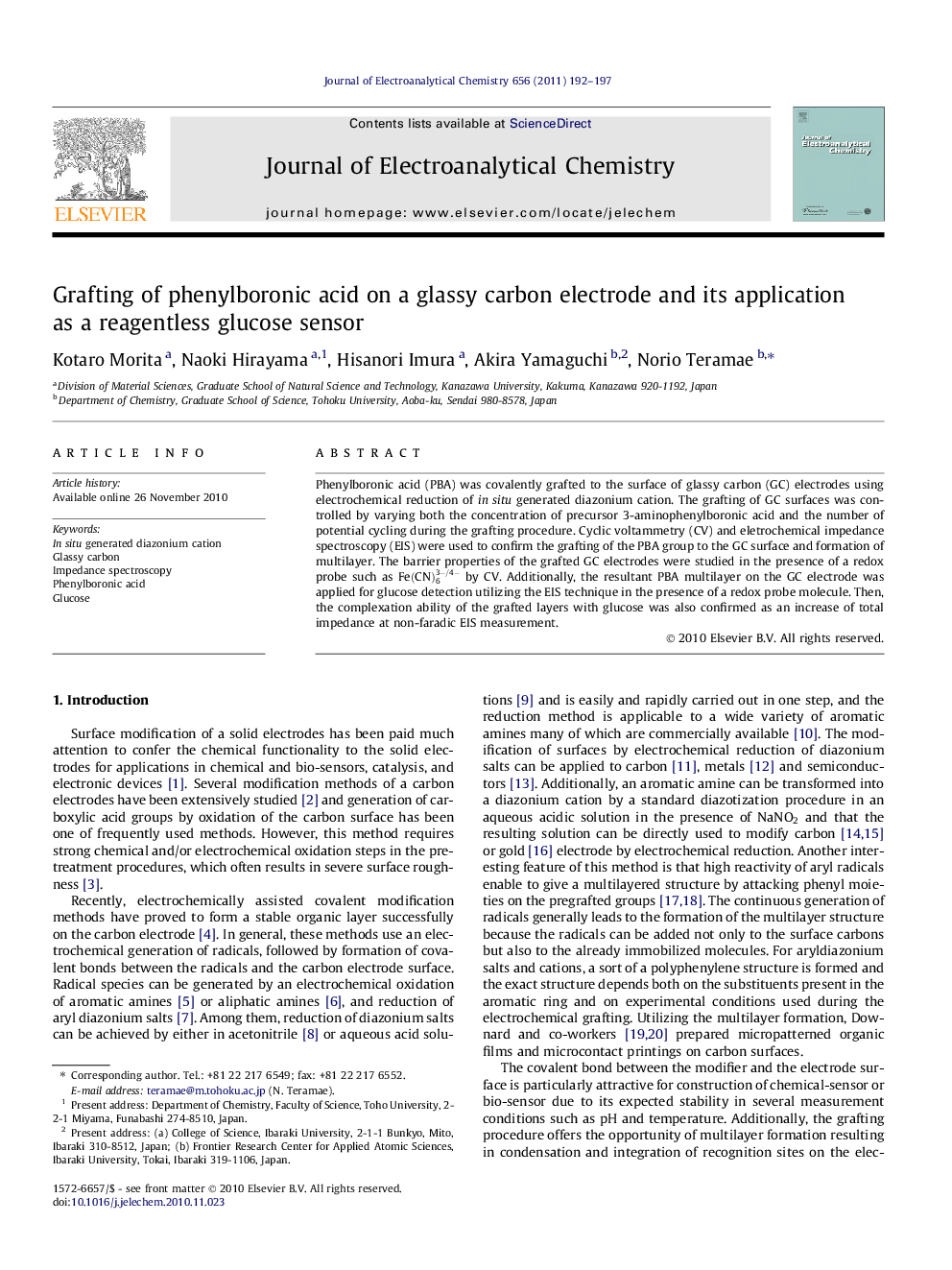| Article ID | Journal | Published Year | Pages | File Type |
|---|---|---|---|---|
| 219578 | Journal of Electroanalytical Chemistry | 2011 | 6 Pages |
Phenylboronic acid (PBA) was covalently grafted to the surface of glassy carbon (GC) electrodes using electrochemical reduction of in situ generated diazonium cation. The grafting of GC surfaces was controlled by varying both the concentration of precursor 3-aminophenylboronic acid and the number of potential cycling during the grafting procedure. Cyclic voltammetry (CV) and eletrochemical impedance spectroscopy (EIS) were used to confirm the grafting of the PBA group to the GC surface and formation of multilayer. The barrier properties of the grafted GC electrodes were studied in the presence of a redox probe such as Fe(CN)63-/4- by CV. Additionally, the resultant PBA multilayer on the GC electrode was applied for glucose detection utilizing the EIS technique in the presence of a redox probe molecule. Then, the complexation ability of the grafted layers with glucose was also confirmed as an increase of total impedance at non-faradic EIS measurement.
